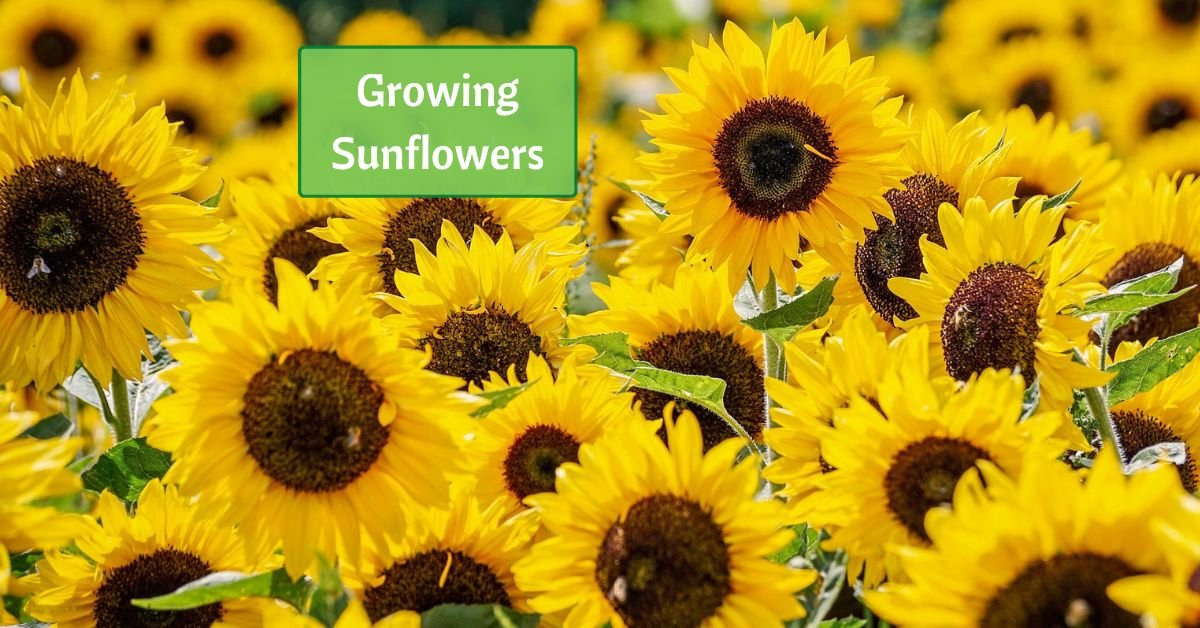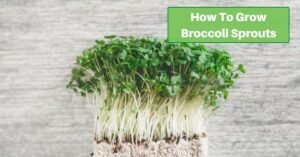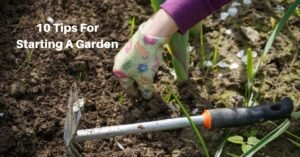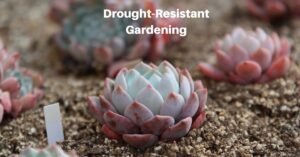Think of your garden bathed in the glow of towering sunflowers, their cheerful faces following the sun’s journey across the sky. The joy of growing sunflowers lies not only in their stunning beauty, but it’s also relatively simple to raise these brilliant blooms.
So let’s have a look at how to raise these plants, from their soil needs right through enjoying – and even harvesting – their wonderful flowers!
Choosing the Right Sunflower Seeds
Your journey to sunflower success begins with choosing the seeds that coincide with your gardening vision. Here are the most important factors to consider:
Size
Select from a variety of sizes. Opt for dwarf sunflowers if you have limited space, or go for the grandeur of towering giants to make a statement. Consider the height and dimensions of your garden area when making this choice.
Color
Sunflowers offer a vibrant palette. Yellow might be the first thing that springs to mind when you think of them, but they also come in warm oranges and even striking reds. Pick a color that harmonizes with your garden’s character and the overall aesthetic you desire.
Purpose
Also think about your goal when planting sunflowers. Are you most interested in their beauty? Or do you want to savor the taste of their seeds? Maybe you’re looking to attract wildlife to your yard. Here are some examples to help you choose the best variety.
Beauty in Bloom
The Russian Sunflower is known for its large, radiant blossoms with dark centers. Teddy Bear sunflowers are adored for their compact size and fuzzy, brown centers, making them perfect for borders and floral arrangements. Meanwhile, the Autumn Beauty Sunflower features warm, autumnal colors, from deep reds to bright oranges and yellows.
Harvesting the Bounty
When it comes to edible sunflower seeds, the Black Oil Sunflower and Striped Sunflower varieties reign supreme. Black Oil Sunflowers produce seeds with thin shells, making them easily accessible for birds and humans alike. These are a favorite among those who enjoy roasted sunflower seeds as a nutritious snack. Striped Sunflowers, often used in birdseed mixes, are another option. The seeds are slightly larger than the Black Oil type.
Wildlife’s Delight
Other sunflower varieties are prized for their ability to attract wildlife. The Common Sunflower attracts a wide range of birds, including finches, sparrows, and chickadees, all of whom love the seeds. Jerusalem Artichokes, which are a type of sunflower, yield tubers that are a valuable food source for deer, rabbits, and other mammals. Mexican Sunflowers are nectar-rich and attract bees, butterflies, and other pollinators.
Preparing for Planting
Before you plant those carefully chosen seeds, lay the groundwork for a thriving sunflower garden.:
Choose a Sunny Spot
Sunflowers are sun worshippers, so grant them at least 6-8 hours of direct sunlight daily. Make sure your chosen spot receives ample sunlight throughout the day.
Soil Preparation
Nurture your soil to create an ideal environment for growth. First, assess and adjust the soil’s pH level to be around 6.0 to 7.5, the ideal range for sunflowers. You can use a pH testing kit available at garden centers, “big box” stores with garden sections, or online.
Dig the soil to a depth of about 12 inches (30 cm) or deeper, breaking up any compacted layers. This deep tilling helps roots access nutrients and moisture at different soil levels. Adding organic matter like compost will improve soil fertility and drainage.
Order Sunflower Seeds For Planting
Planting Sunflower Seeds
Now, it’s time to sow the seeds! These guidelines will help your sunflowers grow into healthy, mature plants.
Planting Depth
Gently plant the seeds about an inch deep. Keep them at the right depth; planting too shallow or too deep can affect germination. An inch may not seem like much, especially after we suggested tilling a foot. But sunflower roots grow deep! Sometimes they reach a depth of four feet, so the soil must be loose and well-fertilized.
Immediately after planting, provide a generous soaking and maintain consistent moisture until germination. Keeping the soil evenly moist is essential for successful germination.
Spacing
Give your sunflowers the breathing space they need. Generally, large varieties may require 24-36 inches of spacing between plants, while smaller types can be closer together. Check your seed packet for precise instructions.
Caring for Sunflowers
Like any garden plant, sunflowers require careful attention throughout their growth cycle.
Watering Sunflowers
Sunflowers appreciate regular, deep watering, particularly during dry spells. Keep the soil consistently moist for robust growth. A deep soaking once a week is often better than shallow, frequent watering.
Fertilizing
Around the time your sunflower seedlings reach 6 inches in height, apply a balanced fertilizer to fortify their nutrient supply. Follow the fertilizer package instructions carefully to prevent over-fertilization.
Since the roots can grow so deep, you may want to use a metal pole to create a hole two to three feet deep with a few inches of the plant’s stem. Add fertilizer in the hole so that the deeper roots can get nutrition.
Weeding
Keep the area around your sunflowers weed-free, minimizing competition for essential nutrients. Regular weeding is especially important during the early stages of growth.
Mulching
Mulch serves as a protective shield, retaining moisture and moderating temperature fluctuations for your sunflowers. Apply a layer of organic mulch to help maintain soil moisture and suppress weed growth.
Providing Support for Tall Sunflowers With Stakes or Trellises
For taller varieties, lending support ensures they stand tall and proud. Use stakes or trellises as needed to prevent bending or toppling. Install these supports when the plants are still young, and tie them gently to the stakes as they grow.
Dealing with Pests and Diseases
Keep a watchful eye on your sunflowers to maintain their health and address potential issues.
Pest Control
Employ organic methods to deter common pests like aphids and snails. Consider using neem oil or natural insect-repelling plants nearby to keep pests at bay.
Disease Management
If fungal diseases become a concern, promptly apply appropriate fungicides to safeguard your sunflowers. Preventative measures such as proper spacing and good air circulation can also help reduce the risk of fungal infections.
Harvesting Sunflower Seeds
If you’ve been waiting to harvest sunflower seeds, here’s how to go about it!
Cutting the Flower Heads
When the seeds have fully developed and the flower head starts to droop, it’s time to harvest. When the backs of the flowers turn brown, carefully snip the flower heads from their stalks.
Seed Removal
Extract the seeds from the flower heads using your hands or a fork. Be gentle so you don’t damage the seeds.
Drying
Allow your harvested seeds to thoroughly dry then store them in a cool, dry location. This prevents mold and ensures the seeds remain viable for planting or snacking.
Roasting Sunflower Seeds for Snacking
Beyond planting and harvesting, sunflower seeds make a delectable and nutritious treat:
Soaking
If you want salted seeds, first soak them in salt water overnight. Use about eight cups of water per four cups of seeds. Mix with one tablespoon of salt, adjusted based on the water and seeds you’re preparing.
Rinsing
Give the seeds a good rinse to remove any remaining plant material and excess salt.
Baking
You can season your seeds with your favorite flavors before roasting for a personalized treat, or prepare them “as is.”
Spread the seeds evenly on a baking sheet and roast them in the oven at 300°F (150°C) for around 30-40 minutes, occasionally stirring for even roasting. Adjust the time as needed to achieve your desired level of crispiness.
Cooling
Let the roasted sunflower seeds cool, then indulge in your homemade crispy snack.
Cultivating sunflowers, from choosing a variety to watching them bloom – and maybe even snacking on the seeds – is a journey filled with satisfaction and natural beauty. With careful attention to their care, you’ll be on your way to growing these beautiful flowers!









